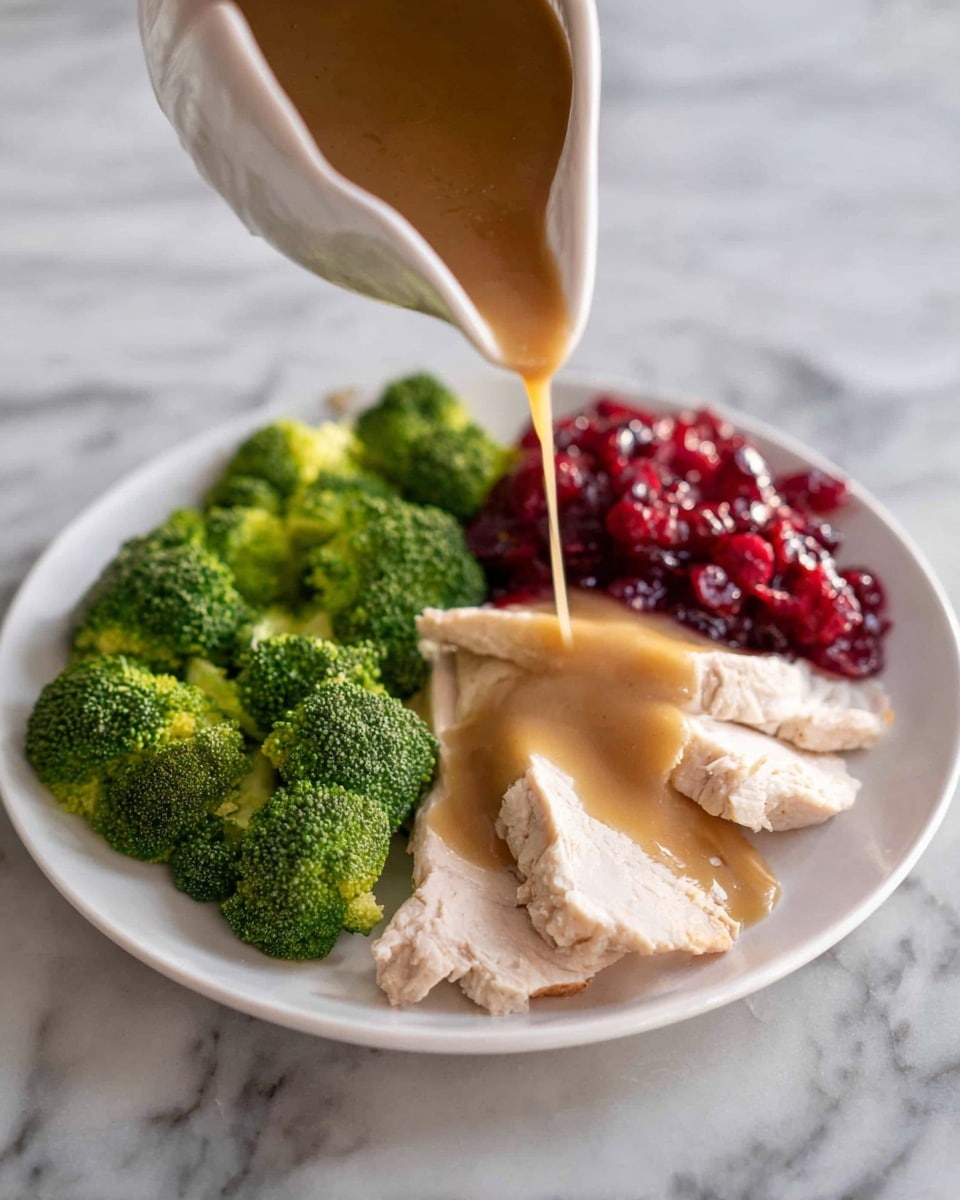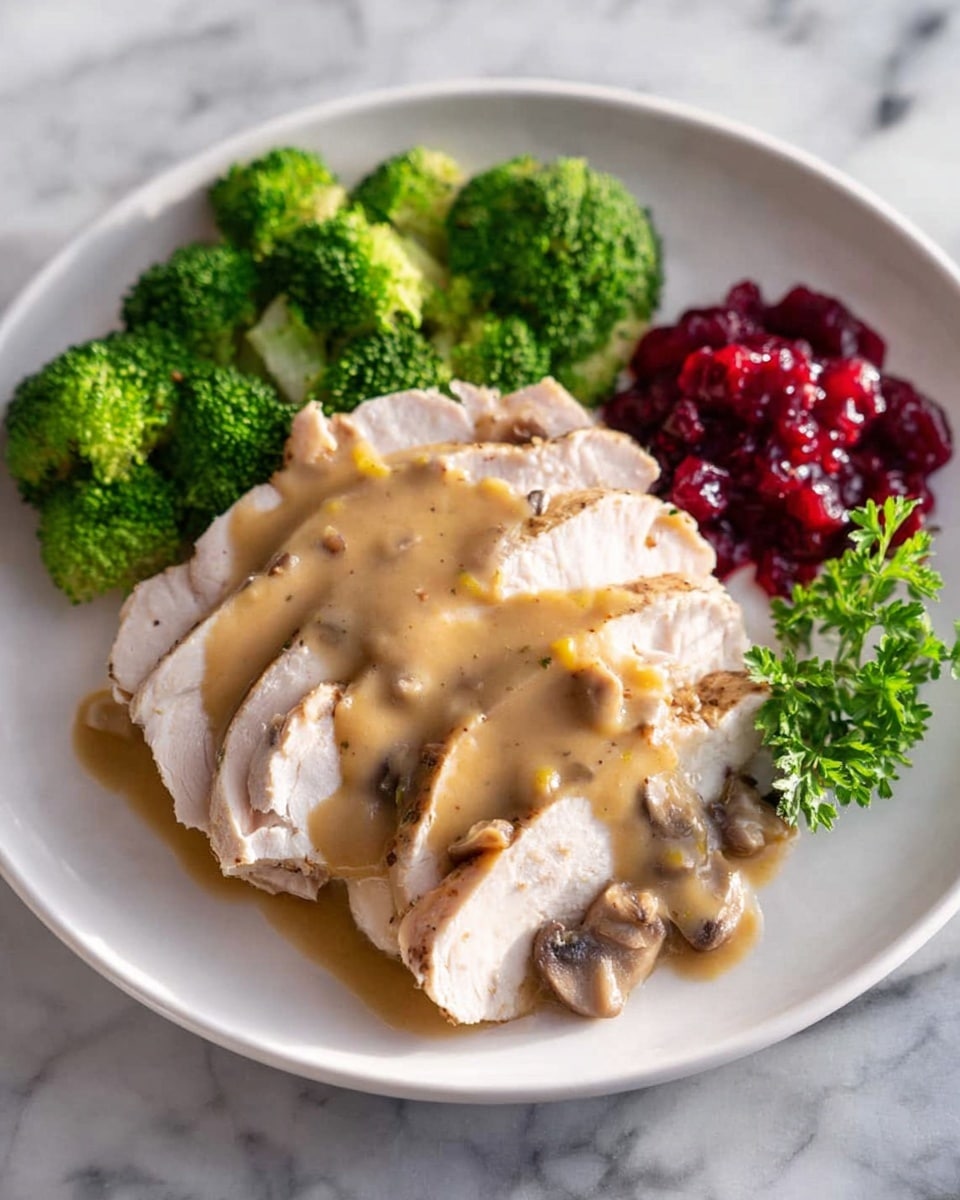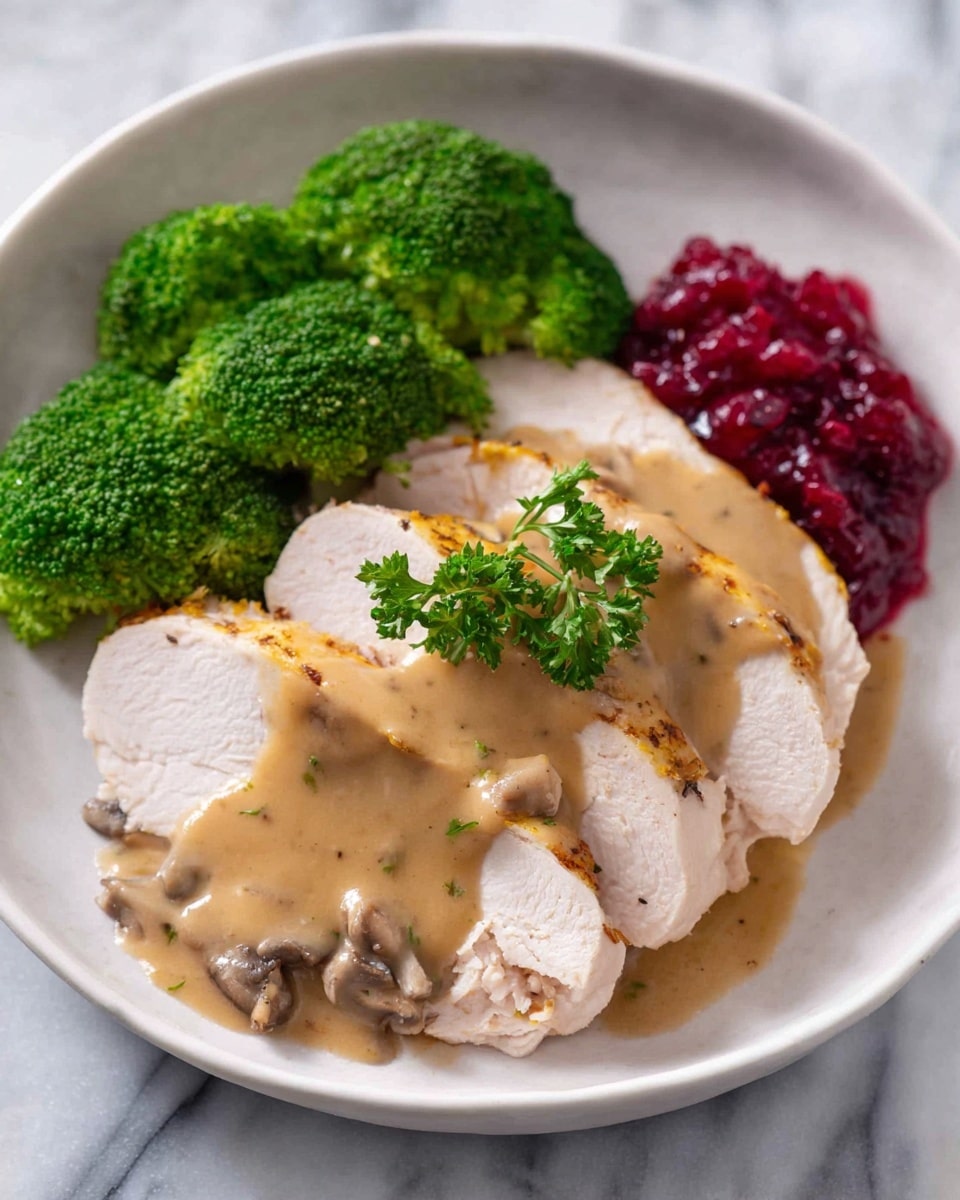If you’re like me and absolutely treasure a rich, flavorful gravy to pour over your turkey (and just about everything else on the plate), this Turkey Giblet and Drippings Gravy Recipe is an absolute game-changer. It’s packed with deep, savory taste from the turkey drippings and the often-overlooked giblets, delivering a gravy that’s incredibly comforting and indulgent without being complicated. Stick with me, and I’ll share all my tips to make your gravy silky, flavorful, and just perfect every time.
Why You’ll Love This Recipe
- Rich Flavor Depth: The giblets and drippings combine for a gravy that bursts with savory, homemade taste.
- Uses Every Part of the Turkey: Nothing goes to waste, and you get that extra-special touch everyone loves.
- Customizable Consistency: You can easily thin or thicken it depending on your perfect gravy texture.
- Simple to Master: With my step-by-step tips, you’ll nail this gravy even if it’s your first time working with giblets.
Ingredients You’ll Need
Each ingredient in this Turkey Giblet and Drippings Gravy Recipe plays an important role in layering flavor and creating the silky texture that makes gravy so irresistible. I like to keep things straightforward but authentic, so you can use what you have on hand and still get amazing results.
- Turkey Drippings: These are the heart of the gravy—full of flavor and natural richness. Make sure to catch those drippings straight from your roasting pan!
- All-Purpose Flour: This helps thicken the gravy and creates that smooth base when cooked into a roux.
- Chicken Broth (or Turkey/Vegetable Broth): Adds a mild, savory background to the gravy without overpowering the turkey flavors.
- Giblets and Turkey Neck (Optional): If you’re up for that classic homemade touch, these add a meaty, earthy depth that takes your gravy to the next level.
- Salt and Pepper: Simple seasoning to bring out all those beautiful flavors.
Variations
I love that this Turkey Giblet and Drippings Gravy Recipe is totally adaptable depending on what you love—or have available. Whether you prefer a simpler gravy without giblets or want to brighten it up with herbs or a splash of wine, make it your own!
- Giblet-Free: If you’re not a fan of the taste or texture of giblets (total understandable), just skip them and rely on the drippings and broth for flavor—I still think it tastes delicious!
- Herb-Infused: I sometimes add fresh thyme or sage to the giblet broth while simmering for an herby twist that feels festive.
- Make it Gluten-Free: Swap the all-purpose flour for a gluten-free alternative, or use cornstarch as a thickener to keep it smooth and tasty.
- Richer Gravy: Stir in a splash of heavy cream or unsalted butter at the end for an ultra-rich finish that my family goes crazy for.
How to Make Turkey Giblet and Drippings Gravy Recipe
Step 1: Simmer the Giblets and Turkey Neck
This is where the magic starts if you’re using giblets. Place the neck, heart, liver, and gizzards into a saucepan, cover with water, bring to a boil, then let simmer gently for about an hour. This slow simmer extracts all the deep flavors that build your gravy’s character. A tip? Use a lid partially covering the pan to keep some steam in but avoid boil-overs. When the giblets are done, scoop them out with a slotted spoon and set aside. I usually keep a bit of that broth—it’s great to thin the gravy later if needed.
Step 2: Prep the Giblets for Gravy
Once cooled, discard the liver to avoid overpowering bitterness. Peel meat off the neck, discard the bones, and finely dice the rest of the giblets. This little bit of meat gets stirred back into the gravy to add remarkable texture and flavor. I learned this trick from my grandma, and it really takes the gravy to a new level—totally worth the extra step.
Step 3: Collect and Separate the Turkey Drippings
After roasting your turkey, carefully pour the drippings from the roasting pan into a large bowl. This includes all the fat and those delicious brown bits stuck to the pan. Let the drippings sit for a few minutes so the fat rises to the top—you’ll want to skim off most of this fat with a spoon, leaving that flavorful liquid behind. This prevents greasy gravy but keeps the deep, rich turkey flavor intact. Trust me, I used to skip this step and ended up with a greasy mess—I won’t make that mistake again!
Step 4: Make the Roux with Drippings and Flour
In a saucepan, add 1 cup of your drippings and whisk in ½ cup flour. The goal here is a smooth, pasty thick mixture—kind of like a thick paste. If it’s too oily, add a little more flour to get the consistency just right. Cook this roux over medium heat, whisking constantly, until it turns a golden-brown color. This toasty step is crucial to build that perfect nutty flavor in your gravy and to cook out any raw flour taste.
Step 5: Add Broth and Finish the Gravy
Slowly pour in 4 cups of chicken broth along with one more cup of drippings into your roux, whisking constantly to avoid lumps. Cook and whisk for about 5 to 8 minutes until the gravy thickens beautifully. Then stir in your diced giblets for that extra burst of meaty goodness. If the gravy feels too thick, add some of the reserved giblet broth or drippings liquid. If it’s too thin, simmer a little longer or add a cornstarch slurry (1 tbsp cornstarch mixed with 1 tbsp water) to thicken. Season with salt and pepper—taste as you go, because every roast has different saltiness.
Pro Tips for Making Turkey Giblet and Drippings Gravy Recipe
- Don’t Rush the Roux: Cooking the flour and drippings mixture until golden brown adds flavor and eliminates that raw flour taste.
- Skimming Fat is Key: Too much fat makes gravy greasy—skimming carefully gives you silky but light gravy.
- Use Reserved Giblet Broth Wisely: This flavorful broth can adjust consistency perfectly without diluting the turkey flavor.
- Avoid Overcooking Giblets: Overcooked giblets get rubbery—simmer just until tender for best texture in your gravy.
How to Serve Turkey Giblet and Drippings Gravy Recipe

Garnishes
I usually keep it simple—a little sprinkle of freshly ground black pepper, maybe a few tiny chopped fresh herbs like parsley or thyme, just to brighten up the gravy and make it look as good as it tastes. Sometimes a light drizzle of melted butter on top adds a lovely sheen and richness.
Side Dishes
This gravy goes perfectly with traditional Thanksgiving sides—think buttery mashed potatoes, roasted veggies, classic stuffing, and, of course, the star of the show, your juicy roasted turkey. I’ve found it also pairs surprisingly well with flavorful rice or even creamy polenta for a fun twist.
Creative Ways to Present
For holiday dinners, I like setting up a gravy boat so everyone can help themselves, keeping the gravy warm with a little tea candle underneath. Another fun idea is drizzling the gravy artistically over individual carved turkey plates or over individual mashed potato servings for a beautiful presentation that wows guests.
Make Ahead and Storage
Storing Leftovers
I store any leftover gravy in an airtight container in the fridge, and it usually lasts about 3 to 4 days. Before sealing, I let it cool completely at room temperature but not longer than two hours. When reheating, a gentle warm-up on the stove with a little stirring is best to keep it silky, not lumpy.
Freezing
Freezing gravy is a great option if you make extra. I pour it into freezer-safe containers or bags, leaving some space for expansion. When I thaw it, I do it overnight in the fridge, then gently reheat on the stove, whisking frequently. Freezing can sometimes change texture slightly, but a quick whisk and maybe a splash of broth bring it back nicely.
Reheating
The best way to reheat is low and slow on the stove with a whisk, stirring often to keep it smooth. If it’s too thick after cooling, just stir in a bit of broth or warm water to loosen it up. I avoid microwaving because it’s harder to control temperature and the gravy can separate.
FAQs
-
Can I make this Turkey Giblet and Drippings Gravy Recipe without giblets?
Absolutely! The giblets add depth and texture but aren’t essential. You can skip them and rely on the turkey drippings and broth for a delicious, smooth gravy. Just adjust seasonings to your taste.
-
How do I keep my gravy from getting lumpy?
Whisk continuously while adding broth slowly to the roux. Make sure the flour and drippings paste is smooth before adding liquid. If lumps form, strain the gravy or use an immersion blender to smooth it out.
-
Can I prepare the giblet broth ahead of time?
Yes! You can simmer the giblets a day ahead and refrigerate the broth and diced giblets separately. Just warm them gently when you’re ready to finish the gravy.
-
What if I prefer a thinner gravy?
If your gravy turns out too thick, stir in reserved giblet broth, drippings liquid, or more chicken broth a little at a time until you reach your preferred consistency.
Final Thoughts
I absolutely love how this Turkey Giblet and Drippings Gravy Recipe brings that extra bit of homemade warmth and complexity to the holiday table. When I first tried it with the giblets included, it was a total game-changer—every bite more satisfying than store-bought gravy could ever be. If you’re willing to put in just a little bit of extra care, you’ll end up with a gravy that feels like a warm hug on your plate. So go ahead—give it a try and impress your family and friends this season. You’ve got this!
Print
Turkey Giblet and Drippings Gravy Recipe
- Prep Time: 10 minutes
- Cook Time: 10 minutes
- Total Time: 20 minutes
- Yield: 15 servings 1x
- Category: Sauce
- Method: Stovetop
- Cuisine: American
Description
This classic Turkey Gravy recipe uses rich drippings from a roasted turkey combined with a flavorful roux and savory giblets to create a deliciously smooth and hearty gravy. Perfect for elevating your holiday turkey dinner, this gravy is thickened naturally and seasoned to taste, offering an authentic taste of traditional home-cooked fare.
Ingredients
Turkey Giblets
- Neck, heart, liver, and gizzards from the turkey (optional)
- Water to cover giblets
Gravy
- Drippings from roasted turkey (about 2 cups total, divided)
- 1/2 cup all-purpose flour
- 4 cups low-sodium chicken broth (or turkey or vegetable broth)
- Salt and pepper to taste
Instructions
- Prepare Giblets: Place the turkey neck, heart, liver, and gizzards in a medium saucepan and cover with water. Bring to a boil, then reduce to a simmer and cook for about 1 hour or until all meat is cooked through.
- Remove and Dice Giblets: Use a slotted spoon to remove the giblets from the water. Reserve some of the cooking liquid if needed to adjust gravy consistency later. When cool, discard the liver, remove meat from the neck, then finely dice all remaining giblets and set aside.
- Separate Fat from Turkey Drippings: After roasting your turkey, carefully pour the drippings into a large bowl. Let sit briefly to allow the fat to rise. Skim and remove most of the fat from the surface using a spoon or ladle.
- Create Roux Base: In a large saucepan, add 1 cup of the skimmed drippings and whisk in 1/2 cup of all-purpose flour until you form a smooth paste. Adjust flour quantity slightly if the mixture appears too greasy. Cook over medium heat, whisking constantly until the roux turns a golden brown color, about 3-5 minutes.
- Add Broth and Remaining Drippings: Slowly whisk in 4 cups of chicken broth and an additional 1 cup of the turkey drippings. Continue whisking the mixture constantly to avoid lumps.
- Simmer and Incorporate Giblets: Allow the gravy to cook for 5 to 8 minutes, stirring frequently until it thickens. Stir in the diced giblets to warm through.
- Adjust Consistency and Season: Assess your gravy’s thickness. If too thick, add reserved giblet broth or some drippings liquid to thin. If too thin, simmer for an additional 10 minutes or add a cornstarch slurry (1 tablespoon cornstarch mixed with 1 tablespoon water) and cook until desired thickness is reached. Season with salt and pepper to taste.
- Serve and Store: Pour over turkey and enjoy. Store any leftovers covered in the refrigerator for up to 3 days.
Notes
- The best turkey gravy uses fresh drippings for full flavor and richness.
- Including giblets adds traditional depth and texture to the gravy, but they can be omitted if preferred.
- Skimming fat ensures a balanced texture and prevents greasy gravy.
- Adjust thickness based on personal preference using reserved giblet broth or cornstarch slurry.
- Use low-sodium broth to better control the saltiness of your gravy.
Nutrition
- Serving Size: 1/15 of recipe (about 1/3 cup)
- Calories: 25 kcal
- Sugar: 0 g
- Sodium: 18 mg
- Fat: 1 g
- Saturated Fat: 0.3 g
- Unsaturated Fat: 0.5 g
- Trans Fat: 0 g
- Carbohydrates: 3 g
- Fiber: 0 g
- Protein: 1 g
- Cholesterol: 5 mg



